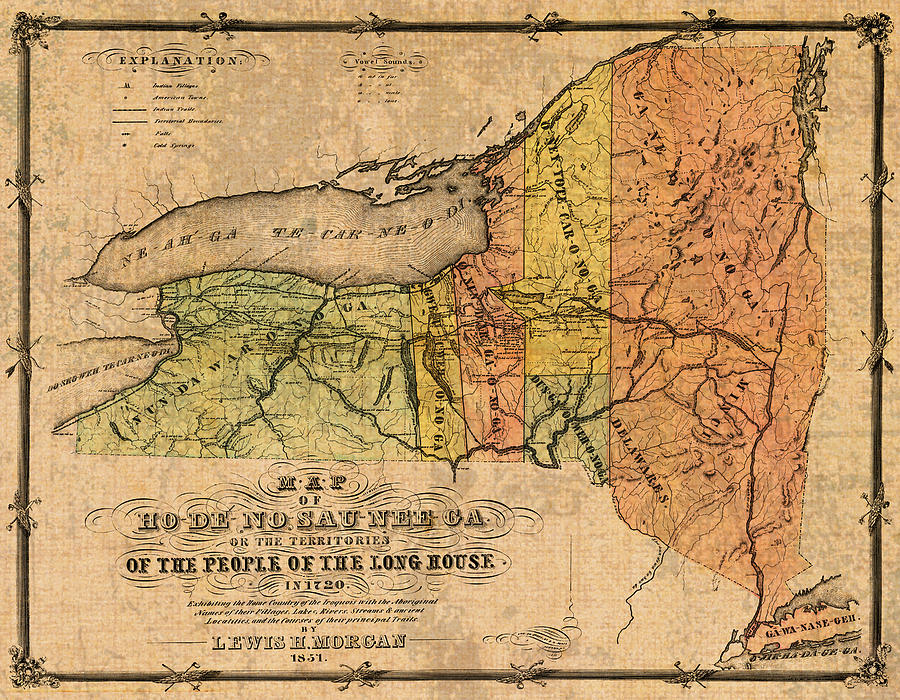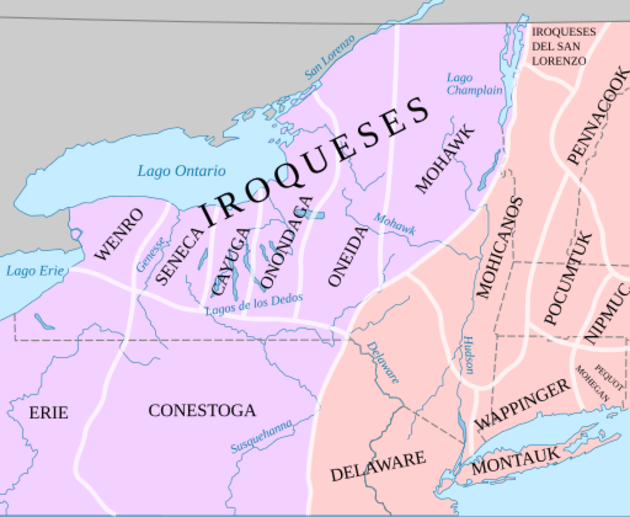Land of the Iroquois: Exploring New York’s Native American Reservations
Land of the Iroquois: Exploring New York’s Native American Reservations

Forget the Empire State Building, the Statue of Liberty, and even the Adirondacks for a minute. Let’s talk about a different kind of New York, one that’s been around for centuries longer than any of those other landmarks. We’re talking about the Native American reservations that dot the state, a living testament to a rich and resilient culture that has endured despite the challenges of colonization and assimilation.
For many, the word "reservation" conjures up images of poverty, isolation, and despair. But that’s a far cry from the reality of New York’s reservations. They’re vibrant communities, bursting with unique traditions, thriving businesses, and a deep connection to the land.
Related Articles: Land of the Iroquois: Exploring New York’s Native American Reservations
- Unveiling the Largest Native Tribes in California: Discoveries and Insights
- Indiana’s Native American History: Are There Reservations In The Hoosier State?
- Discover the Hidden Histories of Native American Tribes
- Unpacking The Map: A Guide To Understanding Native American Reservations In 2024
- Unveiling the Rich Tapestry of Oklahoma's Indian Tribes
So, why should you care about these reservations? Well, for starters, they’re a vital part of New York’s history and identity. They’re also home to some of the most beautiful landscapes in the state, offering breathtaking views and incredible opportunities for outdoor adventure. And, let’s be honest, who doesn’t love a good story? The stories of the Iroquois Confederacy, the Haudenosaunee, are rich with wisdom, courage, and a deep connection to the natural world.
A Glimpse into History:
The story of New York’s reservations starts long before the arrival of Europeans. For centuries, the Iroquois Confederacy, a powerful alliance of six nations – Mohawk, Oneida, Onondaga, Cayuga, Seneca, and Tuscarora – held sway over a vast territory that encompassed much of what is now New York state. Their influence extended far beyond their borders, making them a key player in the political landscape of the Northeast.
But the arrival of Europeans brought a wave of change, and not always for the better. As European settlers pushed westward, they encroached upon the Iroquois lands, leading to conflict and displacement. The Iroquois, despite their strength, were ultimately forced to cede much of their territory, leaving them confined to reservations.
The Reservations Today:
Despite the historical injustices they have faced, the Iroquois people have persevered. Their reservations today are more than just pieces of land; they’re vibrant communities with a strong sense of identity and a deep commitment to their traditions.
New York state is home to eight federally recognized Native American reservations:
- St. Regis Mohawk Reservation: Located in the northernmost part of the state, near the border with Canada, the St. Regis Mohawk Reservation is known for its stunning natural beauty and its strong cultural traditions.
- Oneida Indian Nation: This reservation, located near the city of Utica, is home to a thriving economy, with a number of successful businesses, including the Turning Stone Resort Casino.
- Onondaga Nation: Situated near Syracuse, the Onondaga Nation is the heart of the Iroquois Confederacy. They are known for their deep spiritual connection to the land and their commitment to preserving their culture.
- Cayuga Nation: This reservation, located in western New York, is home to a rich history and a vibrant community. They have been actively involved in land rights activism and in preserving their cultural heritage.
- Seneca Nation: With three reservations in western New York, the Seneca Nation is known for its strong economic presence and its commitment to environmental stewardship.
- Tuscarora Nation: Located in Niagara County, the Tuscarora Nation is known for its strong cultural traditions, including its unique language and its commitment to preserving its heritage.
- Allegany Territory: This reservation, located in the Southern Tier, is home to a vibrant community and a strong sense of identity. They are known for their commitment to education and their cultural preservation efforts.
- Tonawanda Band of Seneca: Located near Buffalo, this reservation is home to a strong community with a deep connection to the land. They are actively involved in cultural preservation and in promoting economic development.


Beyond the Reservation: A Legacy of Resilience:

The impact of the Iroquois people extends far beyond the boundaries of their reservations. Their cultural influence can be seen in the names of towns and rivers, in the traditional crafts and foods, and even in the political structure of the United States.
The Iroquois Confederacy, with its emphasis on peace and diplomacy, served as a model for the early American government. The Iroquois concept of "Three Sisters" farming – a sustainable method of growing corn, beans, and squash together – is still practiced today by many farmers. And their intricate beadwork, pottery, and basketry are prized for their beauty and craftsmanship.
Respect and Understanding:
Visiting a reservation is a unique opportunity to learn about a different way of life, to experience a culture that has survived despite immense challenges. It’s a chance to connect with the land, to appreciate the beauty of nature, and to learn about the resilience and strength of the Iroquois people.
However, it’s important to approach these visits with respect and understanding. These are not theme parks or tourist attractions. They are living communities with their own customs and traditions.
Here are a few things to keep in mind when visiting a reservation:
- Dress respectfully: Avoid wearing clothing that could be considered offensive, such as clothing with offensive slogans or images.
- Be mindful of your language: Avoid using slang or derogatory terms that might be offensive.
- Respect the privacy of residents: Don’t take pictures of people without their permission.
- Be aware of cultural sensitivities: Ask questions politely and avoid making assumptions about their culture.
- Support local businesses: When you visit a reservation, consider supporting local businesses and artisans.
The Future of the Reservations:
The future of New York’s reservations is intertwined with the future of the Iroquois people. They face a number of challenges, including poverty, unemployment, and a lack of access to quality education and healthcare.
But they also have a number of strengths. They have a strong sense of community, a deep connection to their culture, and a growing economic presence. They are actively working to address the challenges they face, and they are committed to preserving their heritage for future generations.
FAQ about Indian Reservations in NY State:
Q: Are there casinos on all of the reservations in New York state?
A: No, not all reservations in New York state have casinos. Only a few reservations have gaming facilities, and these are regulated by the state government.
Q: Can I visit a reservation without permission?
A: You are generally free to visit the public areas of a reservation, but it is always a good idea to check with the tribal government for any specific rules or regulations.
Q: How can I learn more about the Iroquois culture?
A: There are a number of resources available to learn more about the Iroquois culture, including museums, historical societies, and websites. You can also visit a reservation and talk to members of the community.
Q: How can I support the Iroquois people?
A: There are many ways to support the Iroquois people. You can visit their businesses, attend cultural events, and donate to organizations that work to support their communities. You can also learn about their history and culture and share that knowledge with others.
Conclusion:
New York’s Native American reservations are more than just places on a map. They are living testaments to a rich and resilient culture, a reminder that the land has a history that stretches far beyond the arrival of Europeans. They offer a unique opportunity to learn about a different way of life, to experience the beauty of nature, and to connect with the past. So, next time you’re planning a trip to New York, consider venturing beyond the well-trodden tourist paths and exploring the hidden gems of these vibrant communities. You might just be surprised at what you discover.

Closure
Thus, we hope this article has provided valuable insights into Land of the Iroquois: Exploring New York’s Native American Reservations. We appreciate your attention to our article. See you in our next article!